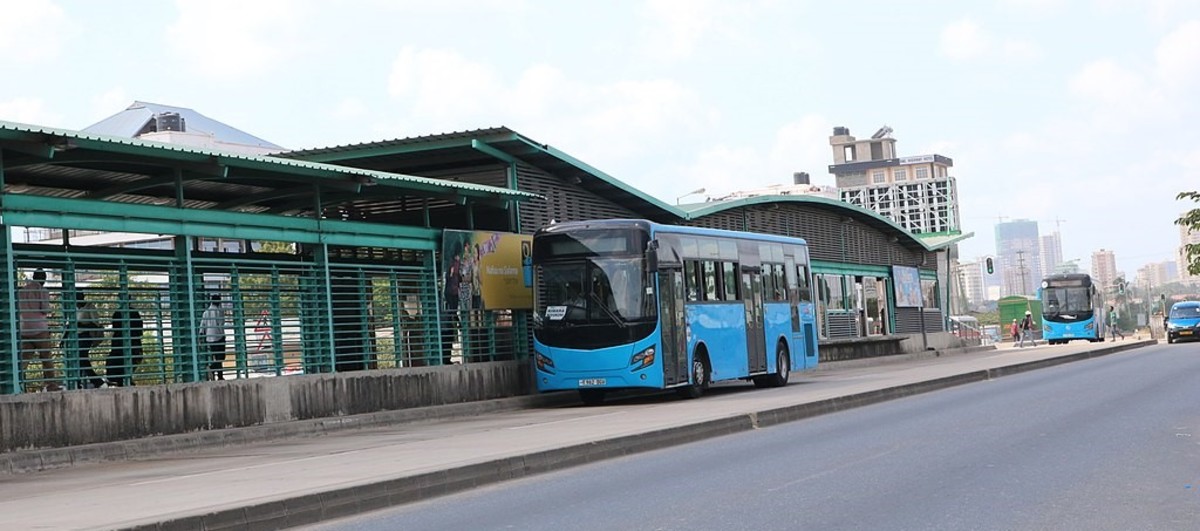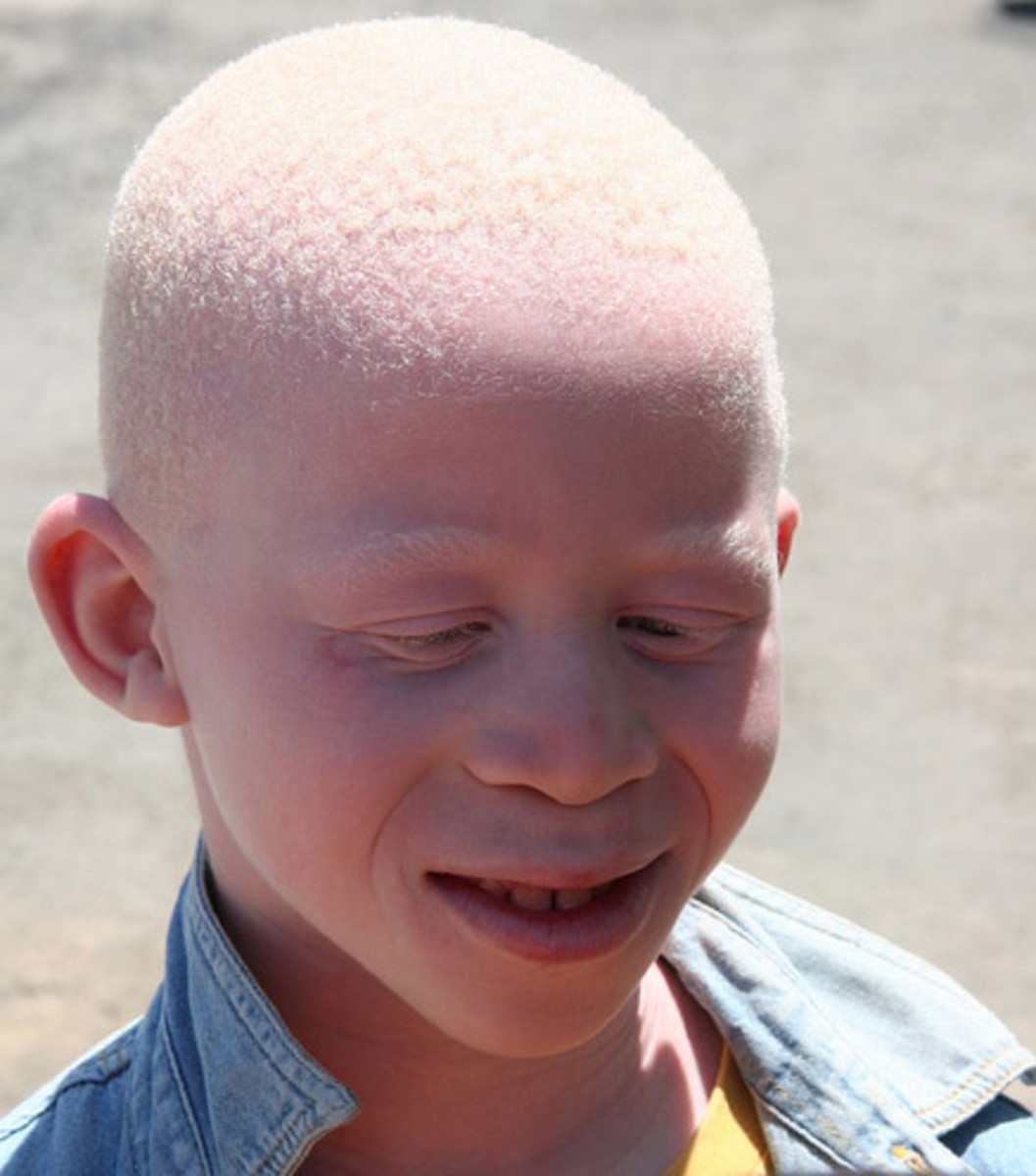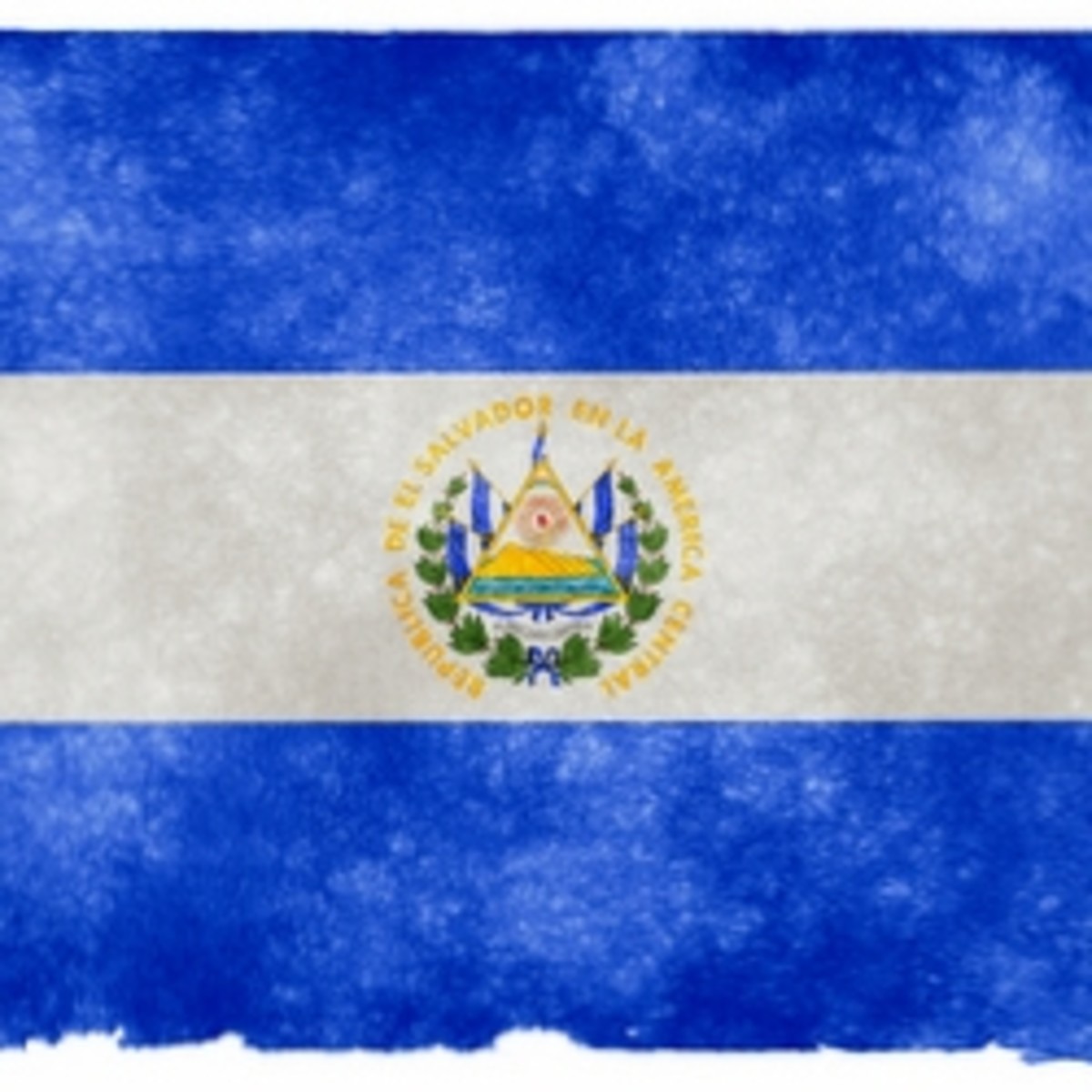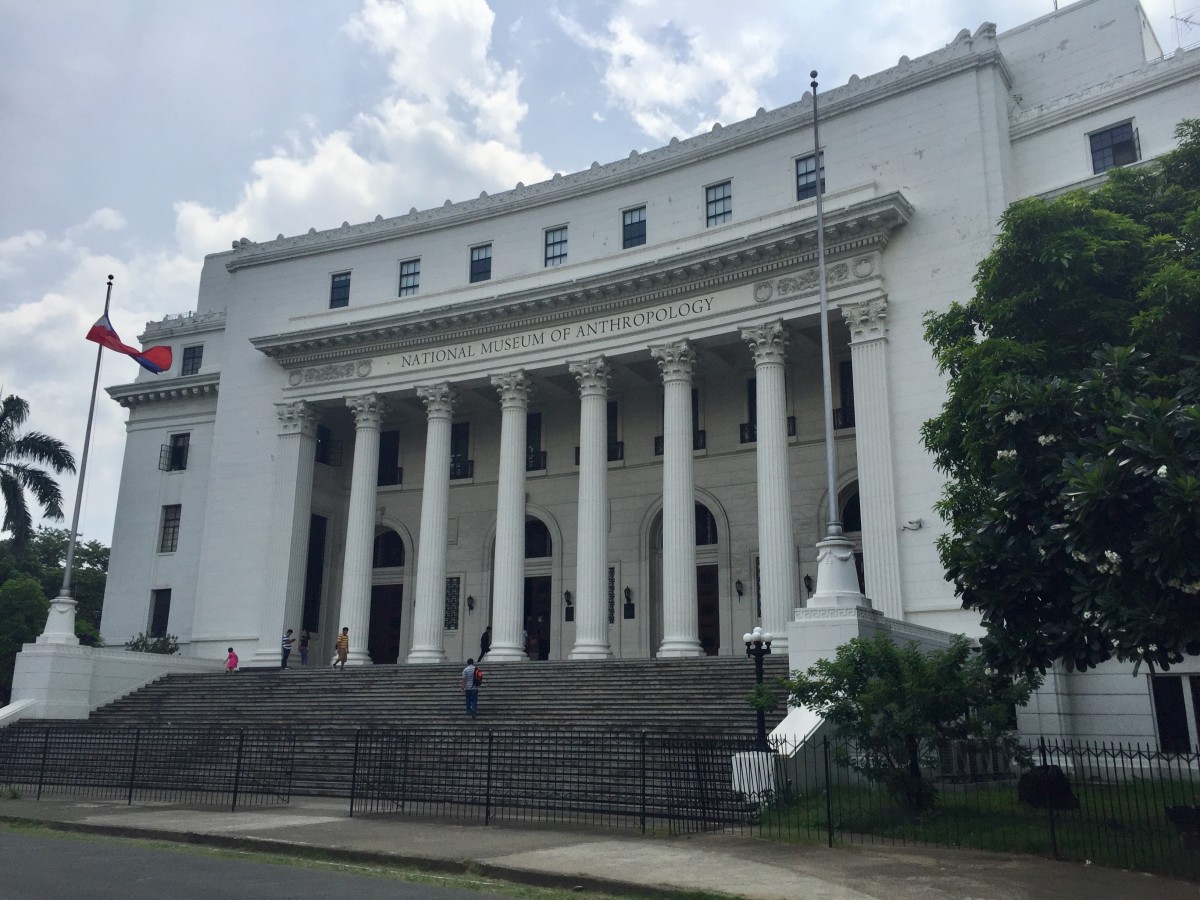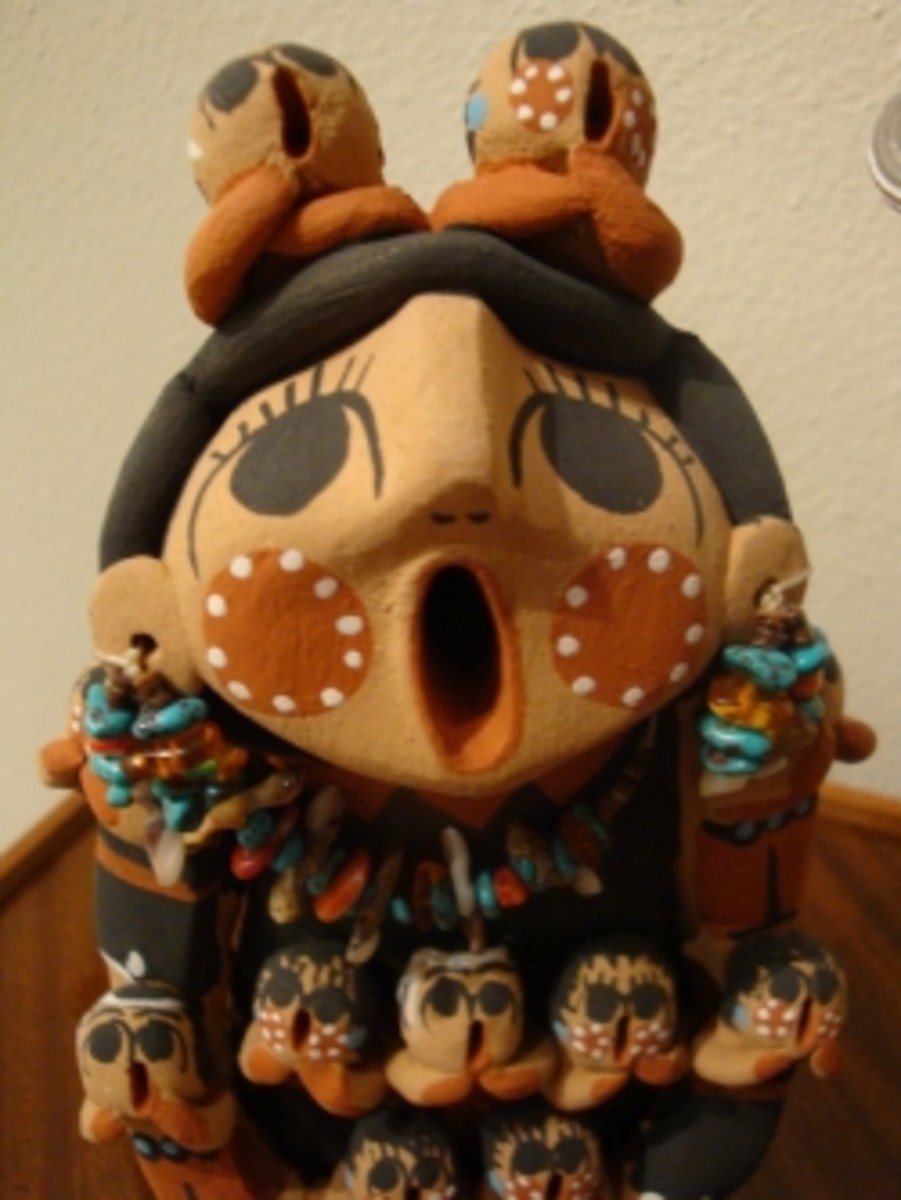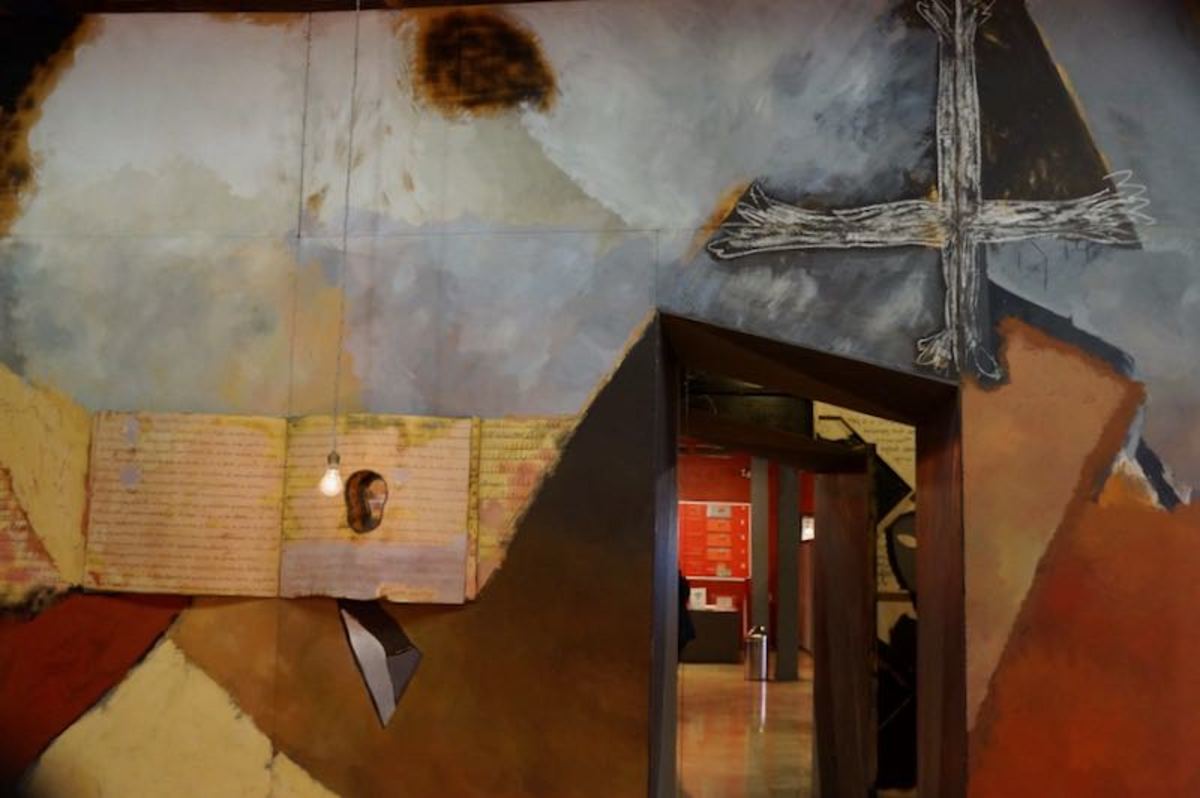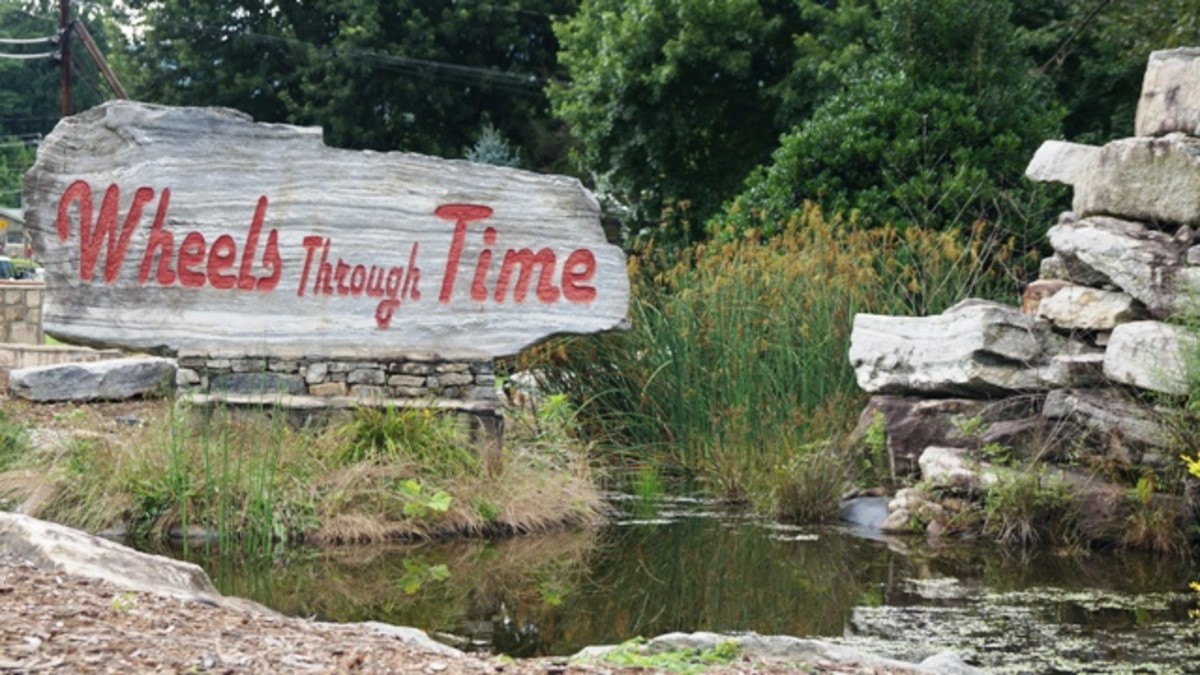A Visit to Dar-es-Salaam, Tanzania
Dar-es-salaam – Haven of Peace
Dar-es-Salaam is on the Indian Ocean coast of Tanzania. The original name of Dar-es-salaam before it was given that name by the Sultan of Zanzibar and Pemba was Mzizima. It is the biggest City in Tanzania and most people imagine that it is naturally the capital. It was, until 1973 when government operations were moved to the more centrally placed but little known town of Dodoma.
Dar-es-salaam is a coconut-fringed sprawling city of about four million inhabitants. Compared to Nairobi, the city residents appear slower in their pace and definitely more polite.
The weather is usually hot and humid. Air conditioning is common in shops whose doors remained closed to retain a cool air on the inside.
There are numerous Forex bureaux’s in the city center which compete for business by displaying their rates on large banners on the pavement. Anyone wanting to change foreign currency to the local Tanzanian shillings and vice versa is able to postpone changing the money until they are sure that they are getting the best rate.
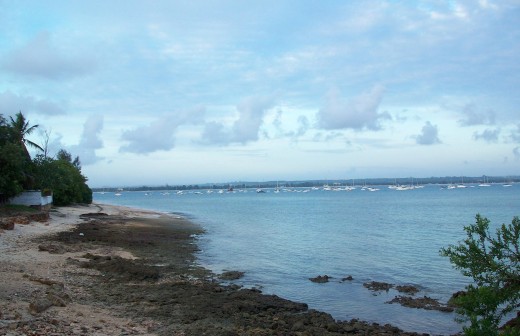
A Brief History of the City of Dar es salaam
Dar es salaam is one of the fastest growing cities in Africa. This city has the largest Swahili speaking population than any other city in East Africa and indeed in the world.
The Wazaramo Bantu community had a settlement in present day Dar es salaam area which they called Mzizima – place of good health. That was until Said bin Sultan set his sights on the East African Coast. He first conquered Mombasa in 1837 before moving his capital from Muscat in Oman to Zanzibar. At Mombasa he installed the Busaidis, his own relatives to be in charge of governance. It is these Busaidis who later attempted to invade Lamu in what is known as the battle of Shela.
When Said bin Sultan died, his empire was divided between his two sons, Thuwaini bin Said in Muscat, Oman and Majid bin Said in Zanzibar. Attracted by the good harbour and potential for trade, Majid bin Said conquered Mzizima, established a palace there and renamed it Dar es salaam – haven of peace around 1858. The palace he built has since been demolished. He also put up the Old Boma, a building that still stands at the junction between Morogoro Road and Sokoine Drive.
As Dar es Salaam developed into a modern city, Europeans settled in ‘white only’ areas such as Oyster Bay’ while Africans concentrated in what was later to become Kariakoo. After Said Majid died in 1870, Dar es salaam fell into decline until the Germans picked it as the capital of their new German East Africa Colony in 1891. The town developed as the administrative and commercial center of German East Africa.
In 1916, the British who were already colonizers of British East Africa (Kenya and Uganda) fought the Germans for the control of German East Africa in World War I. When they conquered Dar es Salaam and kicked out the Germans, they added the Tanganyika territory to East Africa.
The British used an area that was already the ‘African quarters’ in Dar es salaam for the Carrier Corps. The word was corrupted by Africans to Kariakoo and has stuck to this day. The name Kariakoo also exists in Nairobi in an area that was also used by the British Carrier Corps in the same war.
Any visitor to Dar-es-salaam should not leave before visiting the Kariakor market. Here one can buy the Swahili Khanga fabric at a bargain besides curios and other artefacts.
Independence of Tanganyika
Tanganyika became independent in December 1961 with Mwalimu Julius Nyerere as the first president. Zanzibar was still a separate country under the leadership of hereditary Sultans.
It is claimed that East Africans had agreed to use one National Anthem, that would eventually be adopted by other African countries once they got their full independence. That tune was the ‘God Save Africa’ tune that was adopted by Presidents Nyerere, Kenneth Kaunda of Zambia and the ANC of South Africa long before South Africa got its independence from the white Afrikaners. Perhaps the president of Kenya who was in his seventies at independence in 1963 forgot the promise and ordered a team to compose a different tune.
Where is Tanzania?
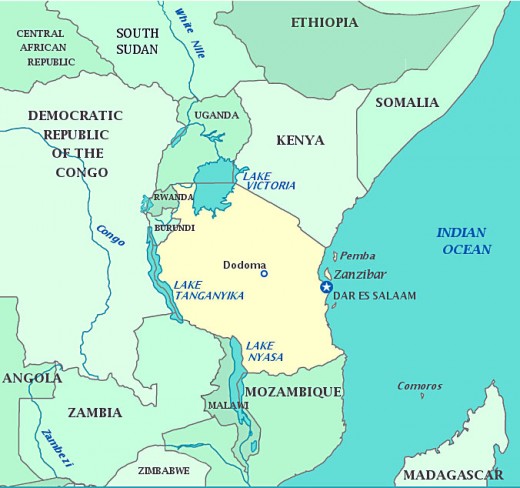
The Federation with Zanzibar
In 1964 Tanganyika federated with the Peoples Republic of Zanzibar to form the republic Tanzania. Zanzibar had just experienced a revolution in which the Sultan’s government had been overthrown by a popular uprising. Dar-es-Salaam continued with its role as the capital, though there were plans to relocate administrative functions to another capital.
In 1973, relocation to the City of Dodoma were initiated, a process that continues to this day. In the years leading to the new millennium, Nyerere’s socialist policies were relaxed. This resulted in an exponential growth of the city. Investors built malls, multi-storey buildings and new businesses leading to the growth of a city as modern as any other on the continent. Today, Dar es Salaam port competes favorably with the port of Mombasa in Kenya for cargo destined to the landlocked territories of Zambia, Rwanda, Burundi and Eastern Congo.
Religion
A 2014 survey indicates that 61% of Tanzanians are Christian. 35% are Muslim and 2% traditionalist. 1% are either not affiliated to any religion, or they practice other faiths apart from Christianity and Islam. The coastal strip and the offshore islands have the highest concentration of Muslims who are mostly Suni. Other large concentrations can be found along the ancient caravan routes into the mainland.
Interesting Places in Dar es Salaam
When you land in Dar es Salaam, plan to visit the National Museum; The village Museum; Kariakoo market; Mwenge Carving Market; Tingatinga Art Gallery; The Old Boma; The Ngazinga Mosque and the Saint Joseph's Metropolitan Cathedral.
Village Museum
The Village Museum which is 9 km north of the city center is a group of traditional houses from the various communities in Tanzania. Each house has the relevant artifacts used by the community that builds that kind of dwelling. Also represented are crops in small gardens beside the houses. To augment the house and its furnishings, actors re-enact the dances of Tanzania’s communities besides demonstrating traditional skills such as basket weaving, wood carving and pottery among others.
One of the huts at Village Museum
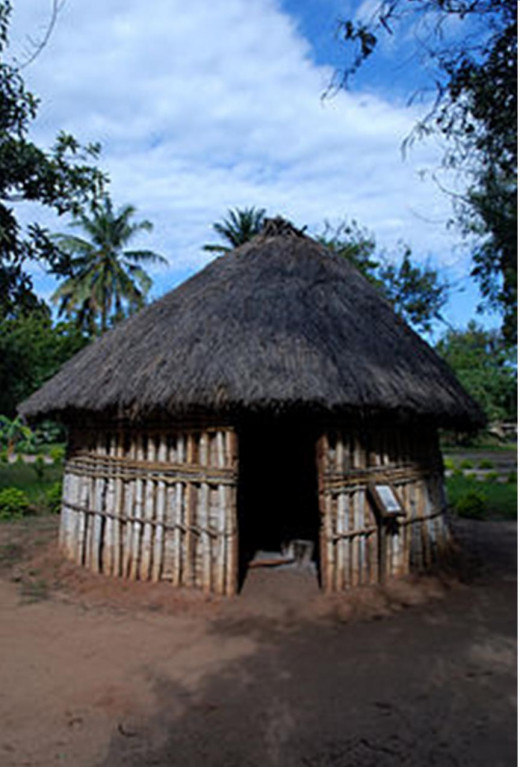
During my visit in Dar-es-salaam, I stayed at the Coral Beach Hotel. The rooms were spacious with extras like a safe in which to place your valuables and hot pot to brew your coffee in the late night. There was also a small fridge whose contents of sodas and hot drinks were replaced every evening and of course added to your bill. Fortunately for me, I do not drink so the contents remained untouched for the entire duration of my stay.
The hotel is situated in the Masaki suburb. One takes a Daladala at Posta in the City centre and drops off at Masaki mwisho - meaning Masaki, end of the trip.
At Masaki, on the way to the hotel, I witnessed women hammering away at coral rocks to make balast for sale. This is a common occupation in some parts of Kenya.
A section of the sprawling Kariakoo market
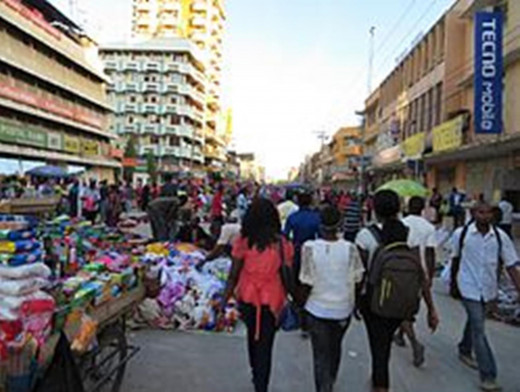
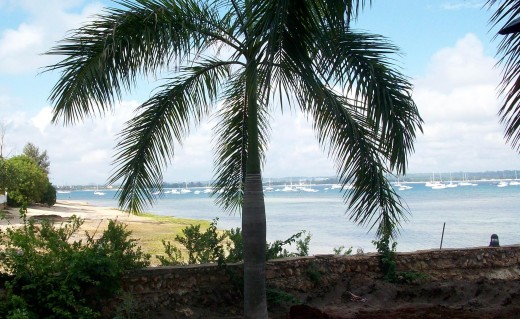
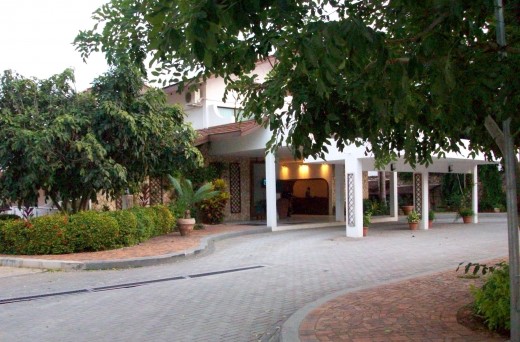
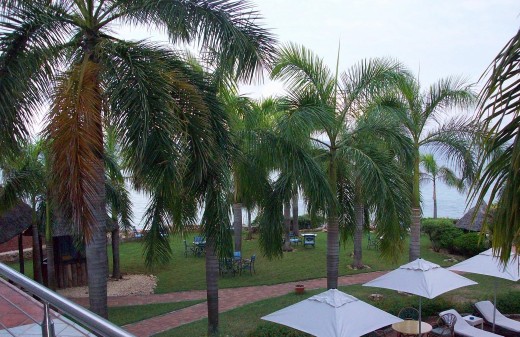
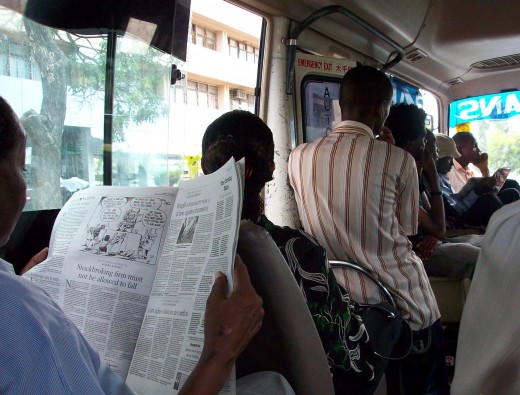
Mwenge Carvings Market
This is a large collection of wood carvings and figurines by local artists. They are then placed on shelves in a large display rook for visitors to pick their choices. Visitors can also see the artists as they work behind the scene.
Saint Joseph's Metropolitan Cathedral
This architectural masterpiece was built between 1897 and 1902by the Germans who had colonized Tanganyika. It is a beautifully constructed Catholic Church with stained-glass in Gothic style. It is the headquarters of the Dar-es-salaam archdiocese.
Saint Joseph's Metropolitan Cathedral - note the Gothic style
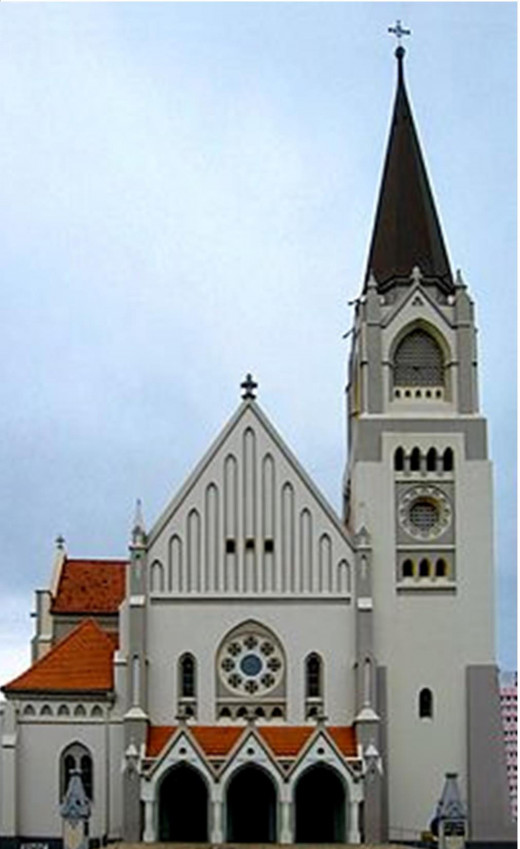
Tingatinga art Gallery
This gallery has artists working on site to produce work in the Tingatinga style. This painting style that was developed by Eduardo Saidi Tingatinga. This technique has been adopted by many artists in East Africa and is very popular with collectors.
Tingatinga Art
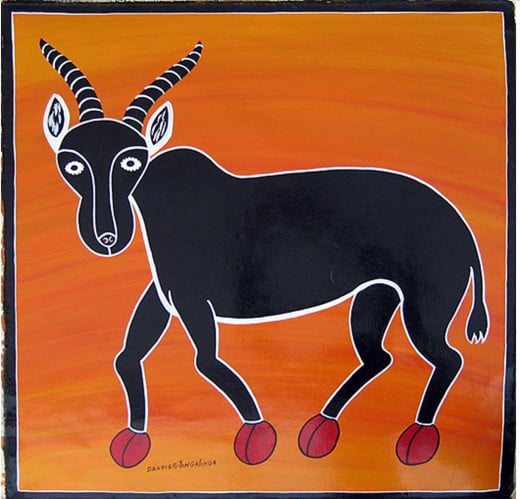
The Old Boma
This is probably the oldest building in Dar es Salaam that is still standing. It was build by Majid bin Said around 1866. It is now the office of the Dar es Salaam Centre for Architectural Heritage (DARCH). As a museum, it has a permanent exhibition on the architectural evolution of Dar es Salaam.
Old Boma
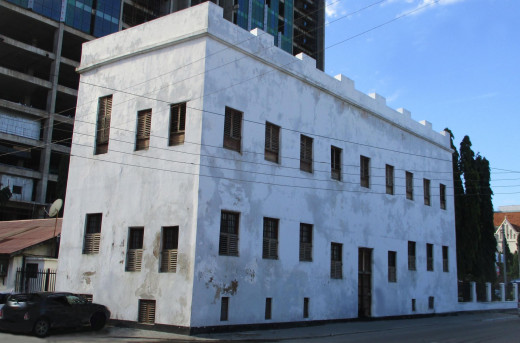
Ngazija Mosque
This pretty mosque was built by Zanzibaris of Comoran origins in 1934. It is on a narrow plot in Dar-es-Salaam city Centre. It has a unique single minaret.
The Ngazija mosque
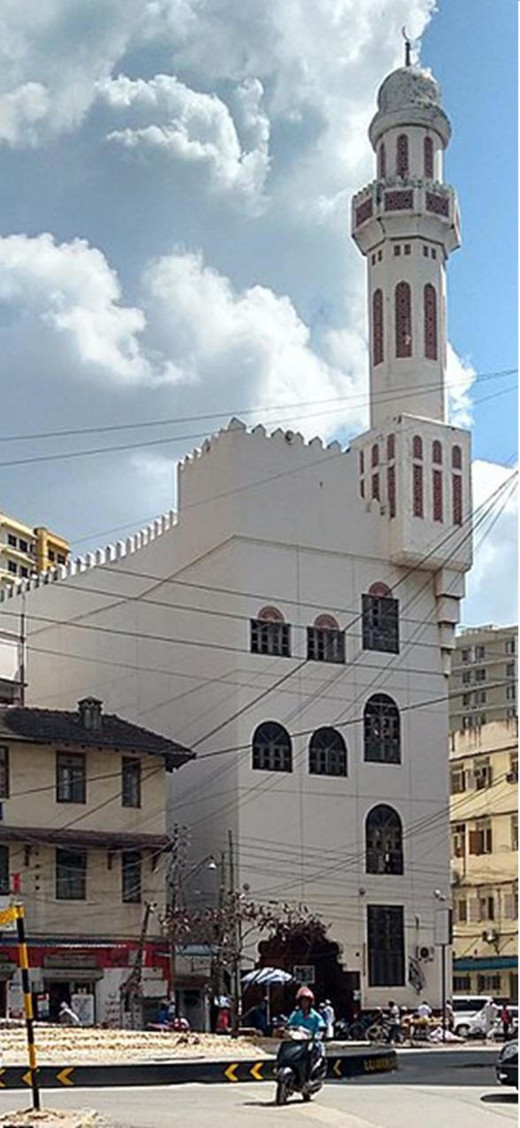
The National Museum
The National Museum of Tanzania is a group of several museums that preserve and exhibit the culture and history of the people of Tanzania. It was established in 1934 as the National Museum of Dar es salaam.
The museum has Human Origins fossils and model dhows that tell the Indian Ocean trade story. It has a good display African cultural objects that include war implements, earthenware and musical instruments. Tanzania has a much larger population and ethnic groups than Kenya's 42 communities.
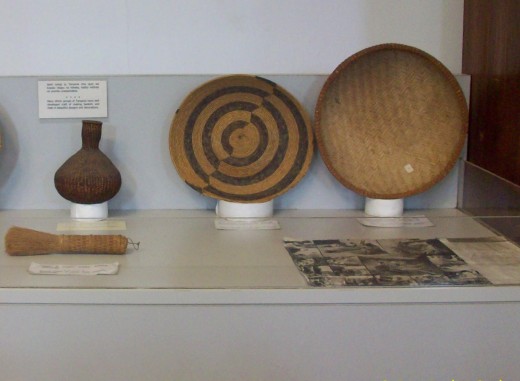
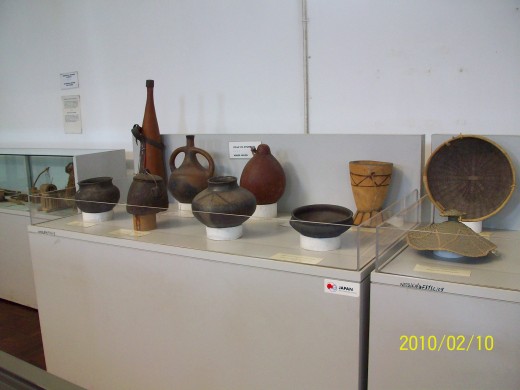
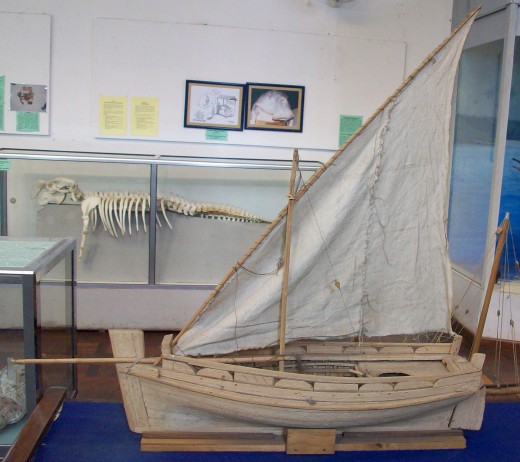
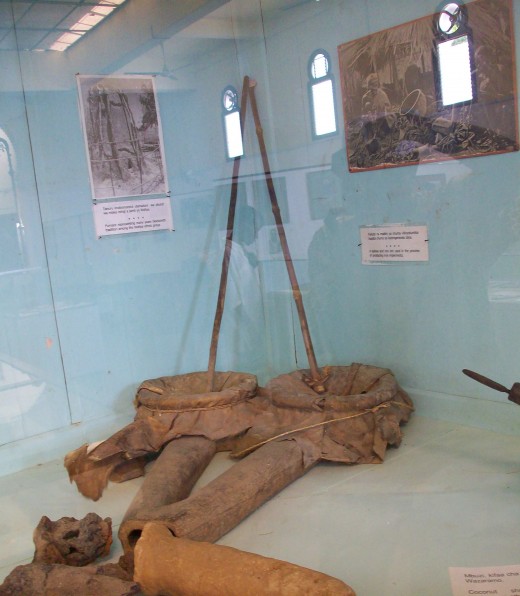
First President, Mwalimu Nyerere's Cars
The museum has an outdoor display of the First President's vehicles. There are vehicles from the days when he was a teacher driving a Morris Minor. Later cars include the Mercedes Benz that he used in the period before his retirement. In this regard, Kenya can learn something about presidential vehicles. They should be displayed to the public because they were bought and maintained with taxes.
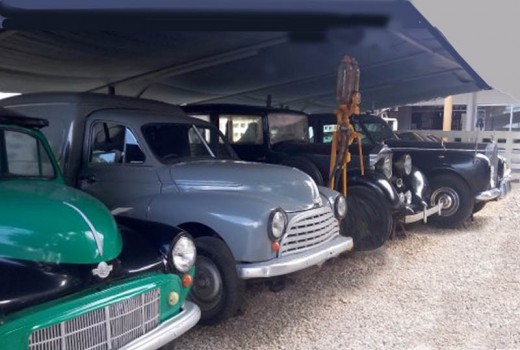
Transport within the City
When I was last in Dar as the city is popularly called, the only means of transport around the city was either by Dala Dala minibuses or three wheeler scooters. The Dala Dala are the equivalent of Kenya’s Matatus but with less bravado and definitely more courteous to the passengers. There has been a rapid bus transport system since with dedicated lanes. These BRT has propelled Dar-es-salaam to the future when compared to Kenya’s Nairobi and Mombasa that are still grappling with massive traffic jams and the hostage-type public transport system of Matatus. Nairobi’s Matatus do not obey traffic rules and can change routes on transit without regard to the inconvenience caused to the passengers.
Three wheeler scooters are refered to as Bajaj in Tanzania perhaps because there is a popular brand from Asia by that name. In Kenya they are called Tuktuk, an onomatopoeic word that comes from the sound that their two stroke engine makes.
© 2019 Emmanuel Kariuki


